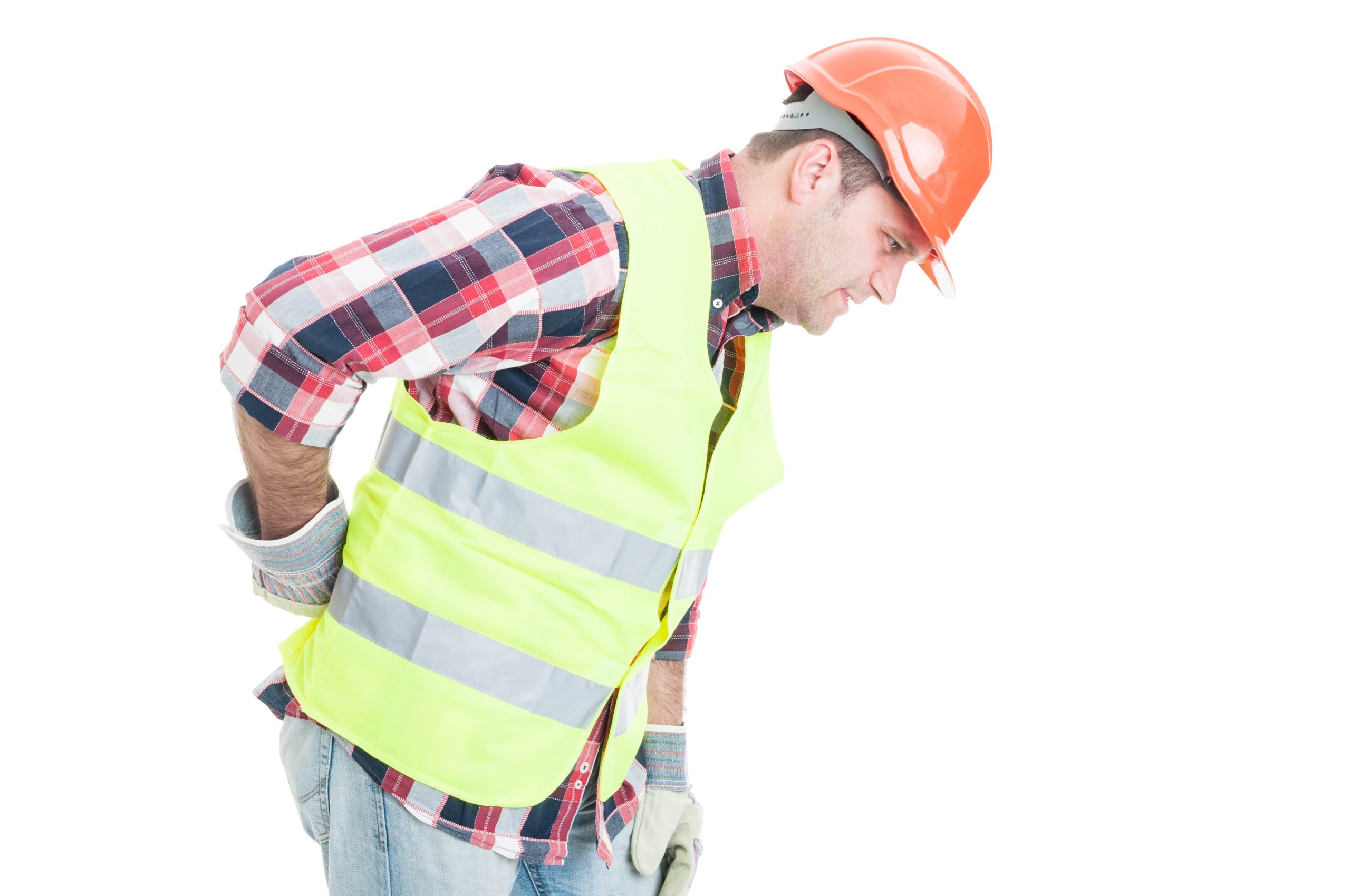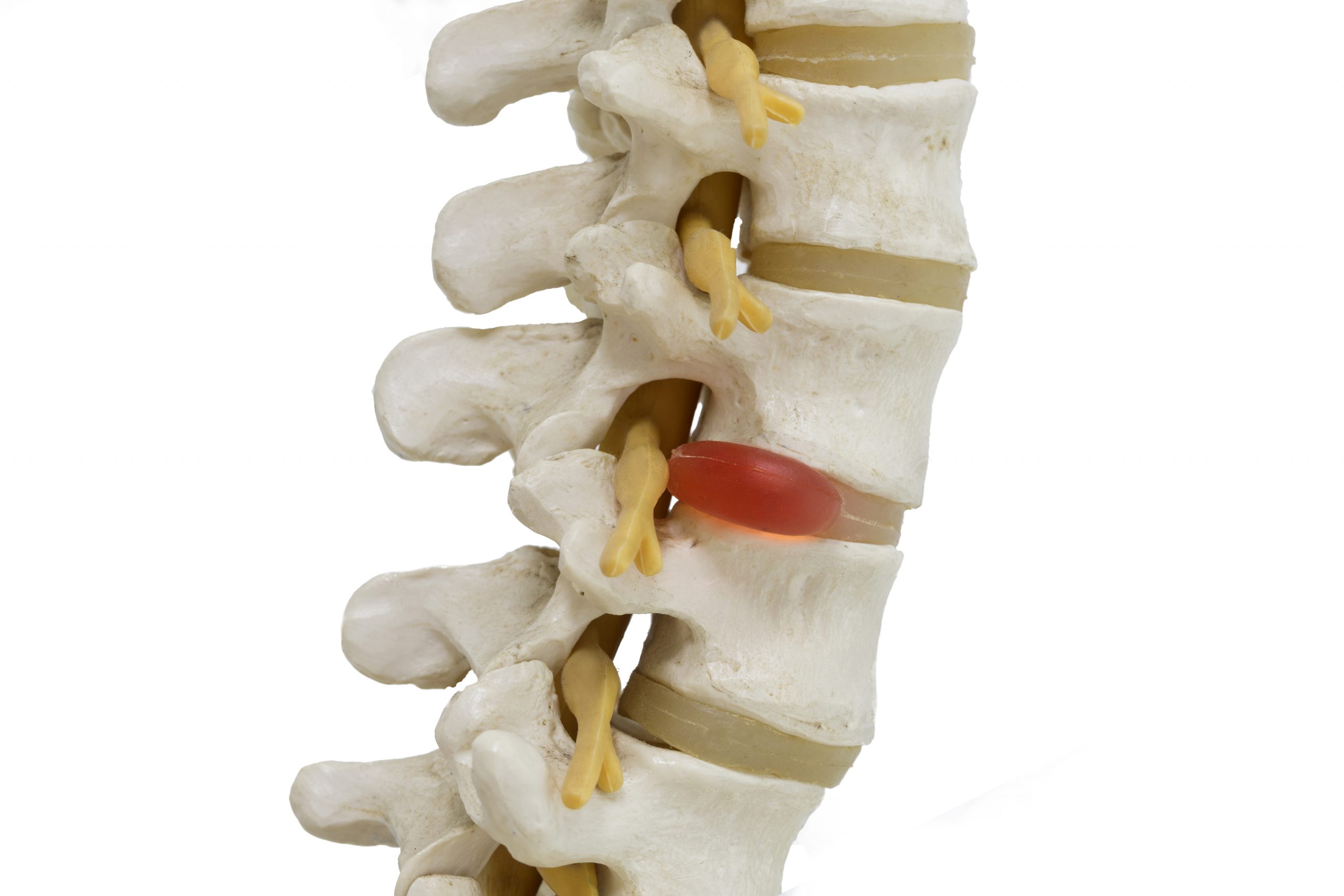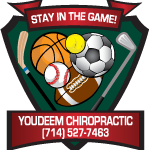Herniated and Bulging Discs
The spinal disc is a soft cushion that sits between each vertebrae of the spine. The spinal discs are composed of a tough outer cartilage (annulus fibrosus) with a squishy center (nucleus pulposis). Like a shock absorber for a car, the disc is the shock absorber for the spine. When too much pressure is placed on the disc, it bulges or herniates. Think of it like a jelly doughnut. Squeeze it too hard and the jelly comes out. That is called a Herniated Disc (Slipped Disc, Bulging Disc).
How does a Herniated Disc Occur?
The discs cushion the spine from compressive forces, but are weak to pressure applied during rotational movements. That is why a person who bends to one side, at a bad angle to pick something up, may more likely herniate a spinal disc than a person jumping from a ladder and landing on his or her feet. Herniation of a disc occurs when the liquid center of the disc bulges outwards, tearing the external ring of fibers, extruding into the spinal canal, and compressing a nerve root. This extruded liquid from the nucleus pulposus may cause inflammation and swelling of surrounding tissue which may cause further compression of the nerve root in the

What causes Symptoms of a Herniated Disc?
When the herniated disc ruptures and pushes out, the nerves may become pinched. When a herniated disc occurs, the space for the nerves is further diminished, and irritation of the nerve results. This irritation of the nerves going down the arms or legs can lead to the characteristic signs of a disc herniation including but not limited to shooting, electrical pain down the arms and legs and numbness and tingling in the hands and feet.
What are the Symptoms of a Herniated Disc?
When the spinal cord or spinal nerves become compressed, they don’t work properly. This means that abnormal signals may get passed from the compressed nerves, or signals may not get passed at all. Common symptoms of a herniated disc include:
- Electric, Stabbing, Shooting or Burning Pain
- Tingling & Numbness
- Muscle Weakness

How does Spinal Decompression help a Herniated Disc?
Non-Surgical Spinal Decompression slowly lengthens and decompresses the spine, creating negative pressures within the discs. This reversal of pressure creates a vacuum inside the discs that helps to reposition bulging discs and draw extruded disc material back into place, taking pressure off pinched nerves. Spinal experts believe that nutrients, oxygen, and fluids are drawn into the disc to create a revitalized environment conducive to healing.
What are the Treatments like?
At the beginning of each session, you will be comfortably fitted with a harness designed to achieve optimal decompression of the low back or neck. During a session of spinal decompression you will notice a slow lengthening of your spine as your discs are gradually decompressed and relieved of pressure. The treatment process is safe and relaxing. While some patients with extensively injured discs have reported mild discomfort during the first few treatment sessions, their discomfort subsides upon subsequent visits. A patient safety switch provides an extra safety feature, allowing you to stop at any point should you feel discomfort. Each treatment session lasts approximately 20 minutes. Individual patient results may vary.
What is the Typical Treatment Protocol?
A typical spinal decompression treatment protocol consists of about15-30 sessions over four to six weeks. Some conditions require fewer visits; some require more. Many patients report relief from their pain and other symptoms during the first few treatment sessions, and most experience dramatic pain relief after completion of their prescribed treatment program.
Why is Spinal Decompression Different from Traction, Physical Therapy and Chiropractic Manipulation?
While traction, physical therapy, and manipulation may reduce disc pressures to as low as 40 mm Hg, only spinal decompression has been shown to achieve negative pressures within the spine. It has been clinically proven that spinal decompression creates negative pressures as low as -110 mm Hg3 within the injured disc during the treatment session. Normally, pulls exerted on the spine trigger sensory receptors in the back to tighten the muscles surrounding the vertebrae and discs in an effort to protect them from injury. Spinal Decompression bypasses this response by slowly pulling on the spine and relaxing the back over an extended period of time, allowing the discs to be repositioned without tension and without causing spasm and muscle guarding.
It is important for patients to make sure that they are treated on a high quality true spinal decompression table by a physician with years of experience and not an imitation spinal decompression table.
Is it true that Research has shown up to 88.9% Success Rate for Spinal Decompression?
Yes! More than 10 research articles have shown success rates for spinal decompression to be up to 88.9%. In fact John Leslie M.D. and the Mayo Clinic reported at the 18th Annual Meeting American Academy of Pain Management in Tampa Florida on September 5, 2007 the following amazing statistics:
Multi-center, phase II, non-randomized pilot study utilizing spinal decompression.
Designed to evaluate the effectiveness and safety of spinal decompression in the treatment of chronic lower back pain.
Patients enrolled have an average of ten years of chronic back pain.
After two weeks of treatments of spinal decompression — 50% reduction in pain scores.
Upon completion of the entire six week protocol success rate of 88.9% was documented.
Is it true that Professional Athletes, Celebrities and Patients in their 90s have turned to Spinal Decompression and Cold Laser Therapy as a Successful, non-surgical option to Neck and Back Pain WITHOUT the use of drugs, pills and surgery?
Yes! Professional athletes, celebrities and even patients in their 90s are turning to spinal decompression and cold laser therapy as an affordable, non-surgical alternative to neck and back pain without the use of drugs, pills and surgery. People are tired of taking pills that simply mask the pain and can cause all kinds of serious side effects. People are frustrated with getting shots that work the first time or two and then eventually have minimal or no effect. And people are scared to death of surgery as they have seen firsthand as their friends and relatives who spent 1,000s of dollars, had weeks of “down time”, have scars, and risked serious side effects and still ended up with a “failed back surgery syndrome”. New non-surgical spinal decompression is not only effective and affordable but is also non-invasive and safe.

